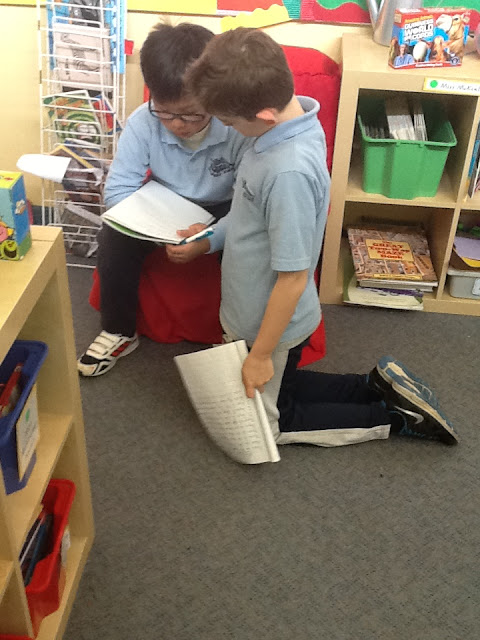How do we assist students to establish clear procedures for editing their writing? How do we help them to develop skills for proofreading?
A basic idea:
• Expect your students to be their own first editor. Build this into the routines in your class.
• Model and demonstrate how you undertake such a routine. Reveal your process.
• Notice student needs based on the edits your students make and teach accordingly.
• During conferences teach one or two editing skills students might use. Avoid overloading the learner.
Sample Editing Checklist. Suitable for Grade 2 (Adapted from Ralph Fletcher)
SKILL
I have written complete sentences
I have used capital letters at the beginning of sentences
I have used correct ending punctuation
I have checked the spelling of key words
*You could modify the list according to the age level or the need.
When it comes to the issue of correction, I suggest teachers provide feedback that engages students in cognitive problem-solving as they attempt to self-edit. Students should be expected to self-edit their texts after receiving feedback, ideally in class where they can consult with their peers and teacher. (Exceptions may include students at lower levels of proficiency, who may not possess the linguistic competence to self-correct.)
Different types of errors require varying treatments. Students may be less capable, for instance, of self-editing some errors with sentence structure than more discrete errors at the word level.
Additional contextualized grammar instruction (in class, or through self-study and enquiry recommended by the teacher can facilitate progress in accuracy if it is driven by student needs and integrated with other aspects of error treatment (teacher feedback, charting, proofreading etc.).
Katie Wood Ray’s book Study Driven deals with enquiry driven investigation of story grammar in detail, providing excellent support for developing such curriculum approaches.
Maintenance of error charts, ideally made up by the students themselves -with guidance from the teacher, can heighten student awareness of their weaknesses and of their improvement.
Research findings reveal that contextualized feedback is more effective than isolated skill sessions. Even students themselves realize that they will learn more from feedback. Feedback on preliminary drafts is more effective than feedback provided after the writing is completed. By then the writer has moved on from the piece. Their attention is elsewhere.
Oral feedback via writing conferences is highly effective on preliminary drafts, because it provides strong interaction between teacher and student and opportunities for instant clarification of meaning. For the student, talking to a teacher about his/her work and responding to the teacher’s questions is a way to expand and clarify ideas and objectives. I always have the student holding the pen- making the changes. Some teachers find this difficult. They just want to get at those surface features and fix them up!
Because some students make a large number of errors, feedback can easily become overwhelming. It is far better to focus on errors that are global/serious (interfering with understanding) and frequent (as compared to other errors). Most of the careful written corrections undertaken by teachers are actually wasted. Error correcting takes lots of teacher time and energy and many students just do not want to see their writing after teacher corrections. This type of correction wrests the responsibility from the student. The teacher effectively owns the correction process and the developing writer is totally overwhelmed. It entrenches dependency and devalues ownership and responsibility for making the writing ‘reader friendly.’
How can the student add to their writing skills in a way that accords with previous grammar knowledge and vocabulary?
One method is Author’s circle. Such group writing helps students to benefit from feedback and support from several peers. It assists students to learn not only from their mistakes, but from the mistakes of others and makes effective use of the students' and the teacher's time.
You can use a white-board, or large chart paper One student writes while the rest of the group (up to three others) offer suggestions and corrections during the writing process.
Author’s circle is an effective method of correcting writing errors. Immediate feedback is quick, within the groups and again when corrections are suggested in front of the entire group there is further reinforcement. This small group approach allows students to benefit from assistance in a peer-learning situation. It is an adjunct to partner sharing.
Another instructional practice is interactive writing, where a number of students share the pen and compose the text for the group. This is best done with teacher guidance.
Once correction is incorporated into the teaching framework of the writer’s workshop those out of context skill sessions and hideous black line exercises become excess to need. The teaching of writing grammar needs to embedded in authentic contexts to be fully appreciated and embraced by our student writers.








Comments
Post a Comment